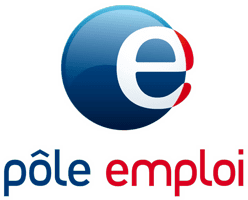
“SAFe has really helped bring the organization along its transformation journey. Its real value has been in the way it links strategy with decentralized execution, using metrics to enable a high level of transparency and fact-based decision making to focus on achieving business outcomes.”
–Natalie Field, Head of MyPost Consumer
Challenge:
Effectively deliver solutions that sustain and further enable Australia Post as a trusted services provider, and delight customers with personalized digital products and services.
Industry:
Delivery Services
Results:
- 100-fold increase in yearly production deployments with 98% cost reduction, enabling iterative product development
- 400% Agile Release Train productivity increase over 18 months
- Strong overall delivery predictability of 80%+
- First-Time Delivery rate improved by 7 percentage points
- Net Promoter Score rose by 8 points
- Increased employee satisfaction and engagement
Best Practices:
- Establish a learning and improvement mindset – Place a primary focus on learning and continuous improvement across all facets of delivery to achieve consistent growth in maturity and effectiveness.
- Measure outcomes – Enabling a metrics and measurement capability links teams to business strategy and is key to ensuring business outcomes are effectively achieved.
- Align to DevOps principles – Building a strong technology delivery platform aligned to DevOps principles enables iterative and innovative product
- Focus on the entire system of work – Build organizational advocacy and sustainability by facilitating change and enablement for shared teams that support and govern Agile Release Trains.
Introduction
Australia Post is Australia’s iconic postal services provider. For 208 years, the organization has been integral to how people and communities connect across Australia. Through a collective workforce of over 50,000 people, Australia Post serves communities, citizens, and businesses, from large corporations to government departments.

Like many organizations, Australia Post’s business has been disrupted and must transform to adapt to the digital era. Traditional business pillars such as letters are in persistent decline, while the company faces fierce competition, but also immense opportunity with the growth of ecommerce. For Australia Post, that opportunity lies in creating sustainable competitive advantage through trusted relationships between consumers, businesses, and government.
Given these forces, Australia Post needed a new way of working to both sustain and further enable the organization as a trusted services provider, and to delight its customers with personalized digital products and services.
SAFe: Driving Change with Lean Structure and Common Language
Over the past four years, Australia Post has invested in its technology, people, and culture to change the way it works to focus on customer experiences and continuous innovation. To help achieve this agility in business, Australia Post selected and adopted the Scaled Agile Framework® (SAFe®) not only as an operating model but as a tool for change. With SAFe, the organization aims to describe, communicate, and build an understanding of how to leverage Lean and Agile principles across the organization.
“The structure and discipline outlined in SAFe have been a powerful way to communicate a different way of working,” says Daniel Fajerman, Head of Digital Engineering. “Using an industry-proven framework offered a strong basis to start the conversation about working differently, providing a common language and consistent base to work off.”
Achieving Sustainable Change
The goal at Australia Post is sustainable, lasting change that fundamentally shifts how the organization approaches and delivers against its strategies. To do so, Australia Post must equip its people with knowledge and the ability to advocate for and be a part of this new way of working.
A broad and comprehensive training and enablement strategy was rolled out across the organization to build experience and maturity. With help from Mark Richards of CoActivation, a Scaled Agile partner, Australia Post trained more than 900 people in Leading SAFe® and SAFe for Teams® courses. This included key roles across executive leadership, within business functions such as finance, risk, architecture, security, marketing and sales, and of course technology leadership and teams.

From the beginning, Australia Post applied a persistent focus on cadence and synchronization – keys to building alignment and embedding disciplined delivery practices across diverse teams. With all of Australia Post on the same sprint (and then Program Increment) cadence, scaling teams and ultimately forming these into Agile Release Trains (ARTs) became a natural evolution.
Achieving sustainable change focused on four key interrelated areas of emphasis across the organization:
- Cross-functional, long-running teams – Moving from transient project teams to cross-functional, long-running teams aligned to customer experiences was a foundational, critical change to the way people work.
- Culture – Australia Post invested significantly in evolving the culture of the organization to one where curiosity, innovation, and a learning mindset predominate.
- Technology enablement – Beyond cultural and process changes, improving delivery flow and time-to-value requires an effective build pipeline and deployment infrastructure aligned to DevOps principles.
- System of work – Implementing a new way of working spans well beyond delivery teams to every part of the organization that supports the delivery of business initiatives. The change team worked closely with shared services groups to tailor approaches to enable and meet their needs under the Framework, including new innovative funding and governance models.
This multi-pronged approach formed sustainable building blocks for change and enablement. With the goal of implementing Agile Release Trains (ARTs), the early focus was on long-running teams and culture to allow maturity to build and grow. The greatest traction came with the advocacy and leadership of business sponsors and leads, who understood the increased business opportunity and had confidence in the delivery model.
MyPost Consumer – Creating a Platform for Personalized Services

Today, five ARTs now support Australia Post’s value streams and associated enterprise strategies. One of those trains, the MyPost Consumer ART, sits within Australia Post’s Consumer market segment value stream. Established in 2015 to play a significant role in the shift toward customer centricity, MyPost Consumer is creating an omni-channel platform to offer personalized services to customers. The train’s primary focus: the parcel delivery experience, which sits at the heart of Australia Post’s business.
The train is made up of 110 cross-functional roles, with each team responsible for specific components of the parcel delivery experience. As a multi-channel, multi-technology program, only 30% of features are purely digital. The most impactful features require changes to multiple channels and enterprise technology systems.
“Getting the job done right is about focusing as much on how we work together, as what we are working on,” says Natalie Field, Head of MyPost Consumer. “We know there are many unknowns in achieving our program strategy and we don’t, and won’t, always get it right. However we also know that by respecting each other, and staying committed to rapid learning cycles, we will always come up with great solutions. “
The train has achieved strong outcomes over the past couple of years. Australia Post attributes the success of the train to several pillars:
Create a customer-centric culture
Building a customer-centric culture meant creating an environment that empowers the entire team to make fact-based, data-driven decisions and equipping everyone to be advocates for the customer experience.
Focus on metrics to drive business outcomes
A strong focus on measurement has resulted in significant positive impact across the organization’s primary success measures. To help achieve this outcome, teams are equipped with technology tools and the ability to collect and report on data. This empowers teams to learn fast about in-market feature performance and make changes when necessary. The result is a data-driven approach to how the train identifies, prioritises, implements, and learns from each Program Increment.
Improve continuously for greater predictability and performance
Success of the train hinges on an ability to improve continuously and focus relentlessly on evolving the experience to meet customer needs. The train adapts and responds to market demands, continually improving technology capabilities to advance the business across its digital channel, retail stores, delivery network, and call centre.
Raising Satisfaction and Throughput, with Lower Cost
A strong focus on measurement and learning to maximize business outcomes resulted in significant positive impact:
- Improved first-time delivery – The First-Time Delivery rate jumped by 7 percentage points over 12 months.
- Reduced cost – Australia Post reduced its infrastructure costs by 98%.
- Predictability – The train consistently delivered on 80% or more of its objectives.
- Customer satisfaction – The Net Promoter Score rose by 8 points over the course of one year.
- Employee engagement – Employee satisfaction and engagement increased.
- Industry accolades – The train was voted the Best Customer Centric Project in Australia / New Zealand by the CX Management Conference.

Australia Post continues to evolve and grow to meet the needs of its business. Its focus on continuous improvement means the organization ever challenges itself to create the next wave of trusted services for its customers.
“SAFe has really helped bring the organization along its transformation journey,” Field says. “Its real value has been in the way it links strategy with decentralized execution, using metrics to enable a high level of transparency and fact-based decision making to focus on achieving business outcomes.”
Share:
Back to: All Case Studies
Suggested Case Study:
Dutch Tax and Customs Administration

